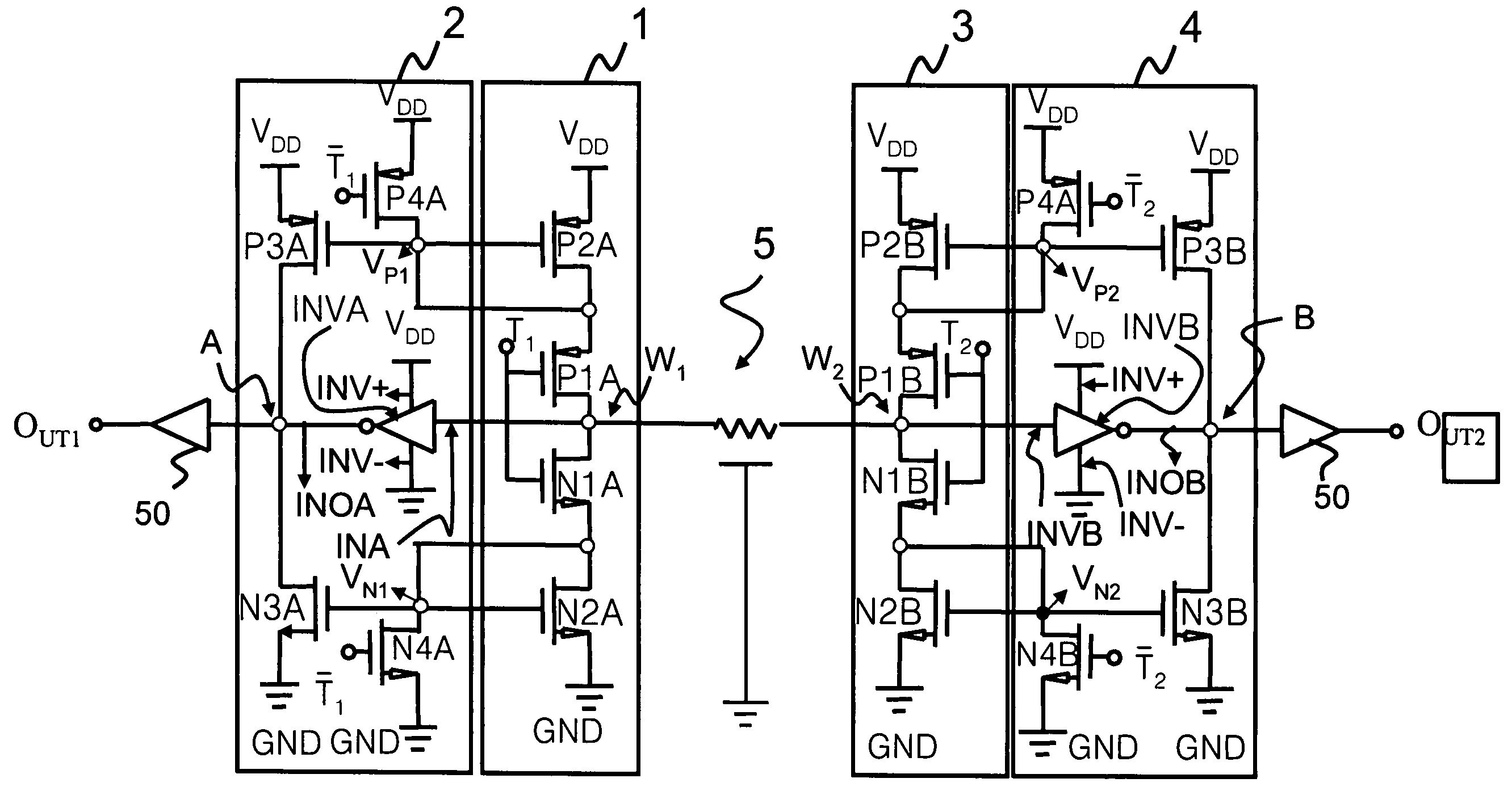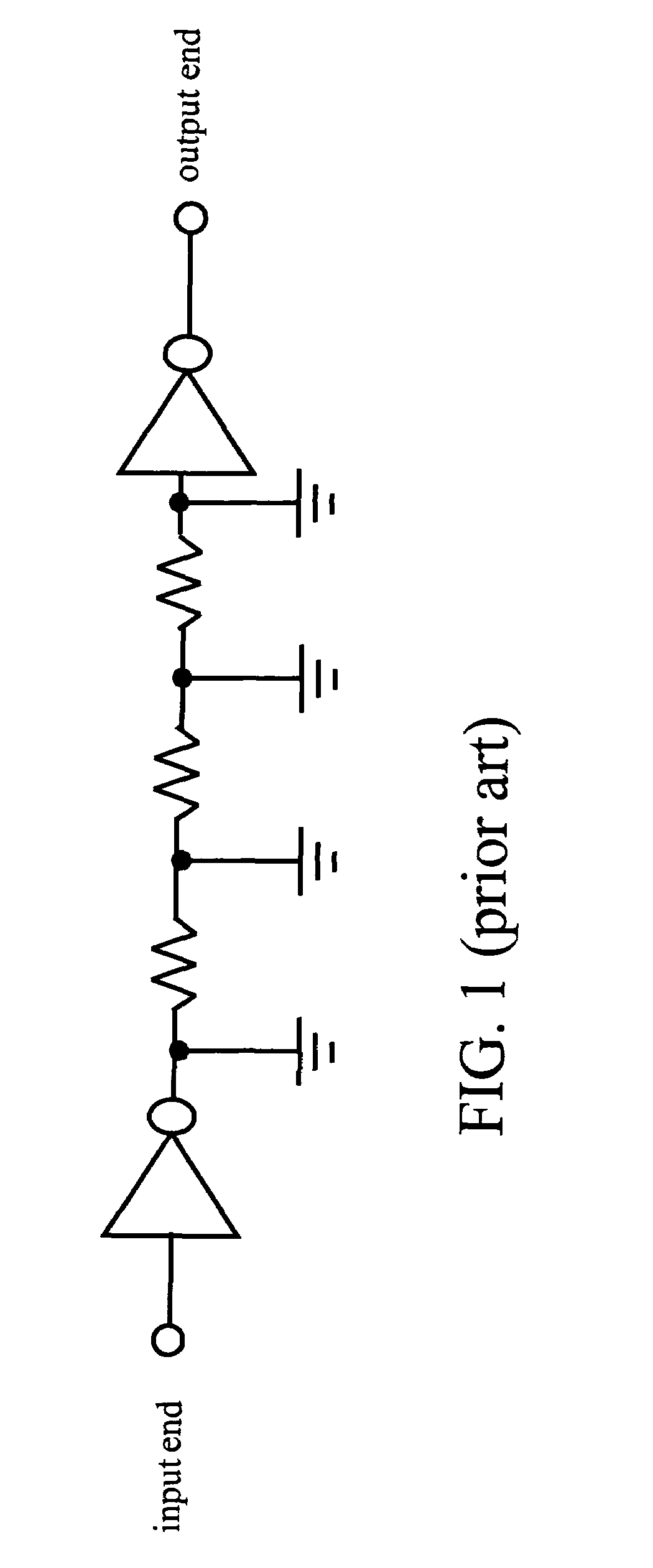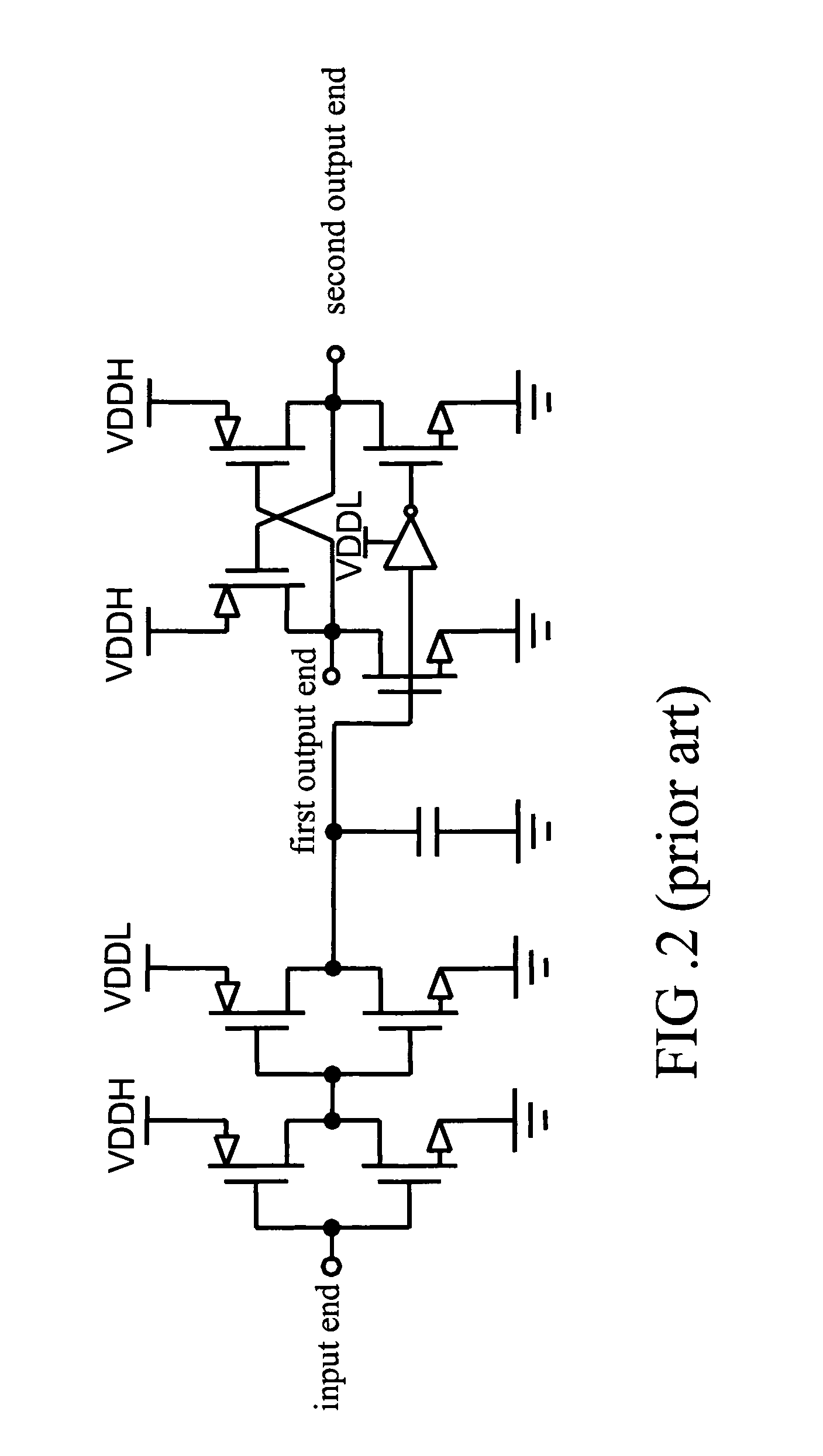Bidirectional current-mode transceiver
a current-mode transceiver and current-mode technology, applied in the direction of logic circuit coupling/interface arrangement, digital transmission, pulse technique, etc., can solve the problems of delay of logic gate, time delay, and greater delay of transmission line, and achieve long transmission line, large area, and great power consumption
- Summary
- Abstract
- Description
- Claims
- Application Information
AI Technical Summary
Benefits of technology
Problems solved by technology
Method used
Image
Examples
first embodiment
[0062]Referring to FIG. 14, it is a detailed circuit diagram of the bidirectional current-mode transceiver according to the invention. Corresponding to FIG. 13, FIG. 14 depicts detailed circuit diagrams of each of block diagrams of the first and second transmission units 1, 3 correspondingly. As the circuit diagram of the first transmission unit 1 is identical to that of the second transmission unit 3, and the circuit diagram of the first receiving unit 2 is identical to that of the second receiving unit 4, each transistor in the circuit diagrams of the first transmission unit 1 and the second transmission unit 3 in FIG. 14 is given the same name, but distinguished by a different numeral.
[0063]The conversion circuits 10A, 10B in the first and second transmission units 1, 3 include first P-type transistors P1A, P1B and first N-type transistors N1A, N1B, while multiple first current sources 20A, 20B include second P-type transistors P2A, P2B and second N-type transistors N2A, N2B.
[006...
second embodiment
[0129]For the aforementioned several groups of transmission units and receiving units, any group of transmission units can be selectively coupled to a group of receiving units, thereby forming a pair-group bidirectional current-mode transceiver. On the contrary, any group of receiving units can be selectively coupled to a group of transmission units, thereby forming a pair-group bidirectional current-mode transceiver. For example, referring to FIG. 21, it is a circuit diagram according to the invention, wherein the bidirectional current-mode transceiver is constituted by a second group of transmission units and a first group of receiving units.
[0130]In the transmission unit, through changing the connecting mode of the first current sources 20A, 20B, i.e., changing the bias point mode of the first current sources 20A, 20B, the bias point of the first current sources 20A, 20B will not be cascaded with transistors, eliminating limitation to the output current. Therefore, compared with ...
third embodiment
[0131]Referring to FIG. 22, it is a circuit diagram according to the invention, wherein the bidirectional current-mode transceiver is constituted by a third group of transmission units and a first group of receiving units. In the transmission unit, the coupling manner of the conversion circuits 10A, 10B is changed to increase the bias level of the first current sources 20A, 20B, i.e., obtaining a greater driving current, thereby improving the operating speed of the transmission unit. Moreover, the coupling manner of the conversion circuits and the first current sources is applicable under a lower supply voltage VDD.
PUM
 Login to View More
Login to View More Abstract
Description
Claims
Application Information
 Login to View More
Login to View More - R&D
- Intellectual Property
- Life Sciences
- Materials
- Tech Scout
- Unparalleled Data Quality
- Higher Quality Content
- 60% Fewer Hallucinations
Browse by: Latest US Patents, China's latest patents, Technical Efficacy Thesaurus, Application Domain, Technology Topic, Popular Technical Reports.
© 2025 PatSnap. All rights reserved.Legal|Privacy policy|Modern Slavery Act Transparency Statement|Sitemap|About US| Contact US: help@patsnap.com



